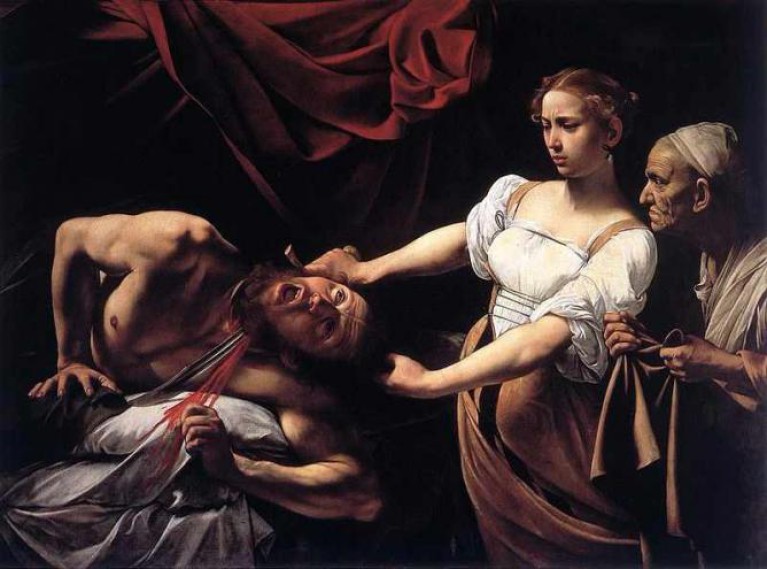Chiaroscuro, in its most basic form, is a contrast of light and dark without regard of color. It is commonly used to give subjects of a painting or photograph three dimensions with light falling on the subject from a particular light source out of frame. Though this technique has existed for a long time, it became popularized in the western world during the Renaissance and early Baroque period by masters such as Rembrandt and Caravaggio. Artists who used chiaroscuro during this time period used a dark background with the subject brightly lit. As seen below Rembrandt used a much more subtle form of chiaroscuro than Caravaggio.

Image From: https://cosmosmagazine.com/technology/did-rembrandt-trace-his-self-portraits
/https://public-media.si-cdn.com/filer/8d/65/8d655885-3556-44d2-b9c5-7881a38674e3/1024px-caravaggio_judith_beheading_holofernes.jpg?resize=654%2C491&ssl=1)
Image From:
https://www.smithsonianmag.com/smart-news/caravaggio-may-have-died-infected-sword-wound-not-syphilis-180970374/
`
Chiaroscuro is also commonly used today. An example of it is in low-key photography. Low-key photography, just like with Caravaggio and Rembrandt, uses dark backgrounds while illuminating the subject. The subject can be illuminated by either artificial or natural light. Low-key photography is also commonly black and white, though it does not have to be. Notable low-key photographers are Paul Strand, and Yousuf Karsh.

Image From:
http://100photos.time.com/photos/paul-strand-blind

Image From:
https://karsh.org/photographs/john-f-kennedy/
.
Overall, chiaroscuro is used to create a sense of drama and to draw the viewers eyes to the subject. These effects are not only wanted in paintings, and photography, but also film. Two films that utilized chiaroscuro to either set the tone or to draw attention to a certain subject is “The Godfather” and “Frankenweenie”.

Image From:
https://www.imdb.com/title/tt0071562/

Image From:
https://www.awn.com/animationworld/burton-gets-personal-frankenweenie
Citations:
- Britannica, The Editors of Encyclopaedia. “Chiaroscuro.” Encyclopædia Britannica, Encyclopædia Britannica, Inc., 13 Oct. 2015, www.britannica.com/art/chiaroscuro.
- “Chiaroscuro.” Wikipedia, Wikimedia Foundation, 22 Jan. 2019, en.wikipedia.org/wiki/Chiaroscuro.
- Riojas, Esteban. “Film from a Clearer World.” Chiaroscuro in Film, fromaclearerworld.blogspot.com/2012/09/chiaroscuro-in-film.html


4 Comments. Leave new
Wow! Really great article. You describe it in a good way. Visit this for reading such amazing articles. https://mechanicalboost.com/what-is-an-impulse-turbine-main-components-working-principle-and-applications/
[…] Aesthetic Exploration: Chiaroscuro […]
I have always appreciated the exaggerated drama that Caravaggio brought to his paintings because of the lighting (among other details), but I think your post downplayed the emotional effect that chiaroscuro has on the viewer. Why do you think that this particular form of lighting has been consistently used or referenced for centuries? What challenges are faced in film and photography when replicating that technique? I believe that color still remains a factor in Caravaggio’s work, as he frequently uses saturated warm colors to further bolster the emotion of his work. When color is removed from the imagery, how does that change the efficacy of the chiaroscuro effect?
This was a really informative read. It was interesting to see examples of the chiaroscuro technique in modern day media. Do you think as a whole the technique has evolved over the years? The examples of renaissance paintings used a large amount of color compared to the modern day film images that have much more of a two-tone pallet.